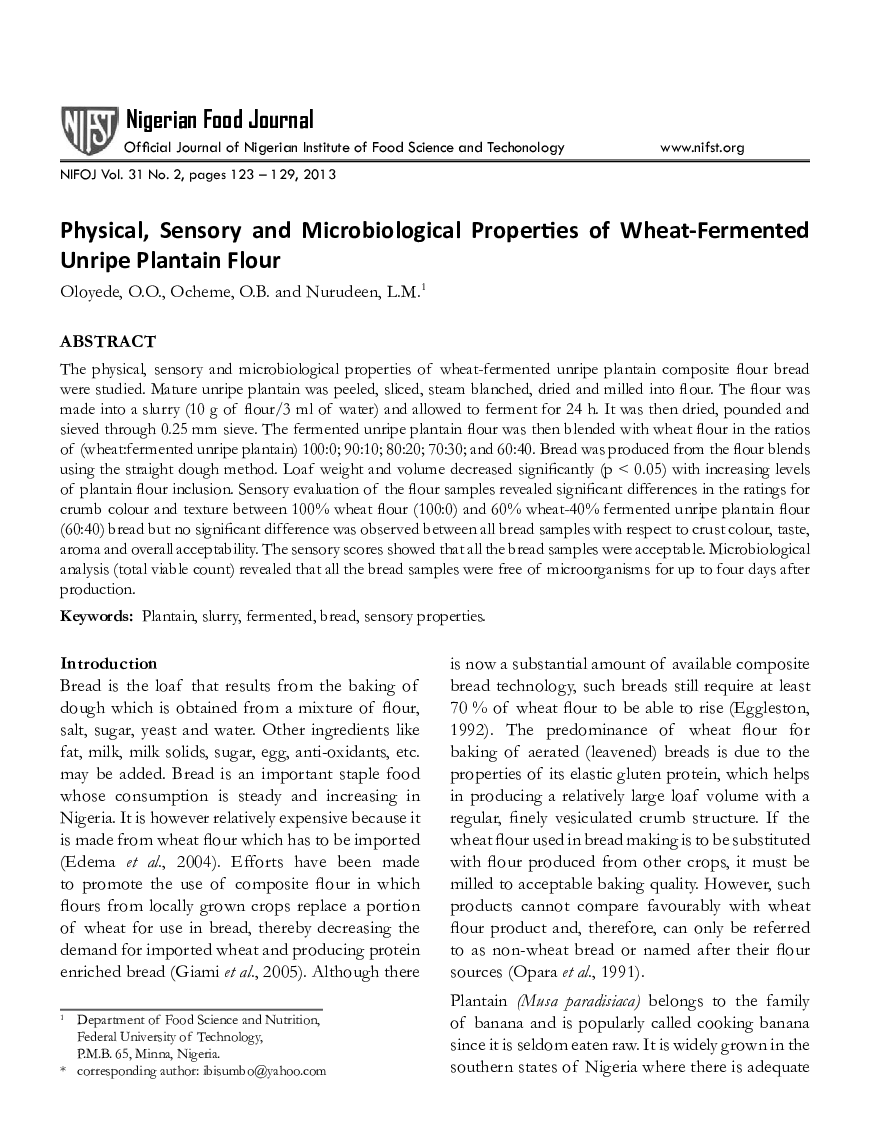| Article ID | Journal | Published Year | Pages | File Type |
|---|---|---|---|---|
| 4565736 | Nigerian Food Journal | 2013 | 7 Pages |
ABSTRACTThe physical, sensory and microbiological properties of wheat-fermented unripe plantain composite flour bread were studied. Mature unripe plantain was peeled, sliced, steam blanched, dried and milled into flour. The flour was made into a slurry (10 g of flour/3 ml of water) and allowed to ferment for 24 h. It was then dried, pounded and sieved through 0.25 mm sieve. The fermented unripe plantain flour was then blended with wheat flour in the ratios of (wheat:fermented unripe plantain) 100:0; 90:10; 80:20; 70:30; and 60:40. Bread was produced from the flour blends using the straight dough method. Loaf weight and volume decreased significantly (p < 0.05) with increasing levels of plantain flour inclusion. Sensory evaluation of the flour samples revealed significant differences in the ratings for crumb colour and texture between 100% wheat flour (100:0) and 60% wheat-40% fermented unripe plantain flour (60:40) bread but no significant difference was observed between all bread samples with respect to crust colour, taste, aroma and overall acceptability. The sensory scores showed that all the bread samples were acceptable. Microbiological analysis (total viable count) revealed that all the bread samples were free of microorganisms for up to four days after production.
